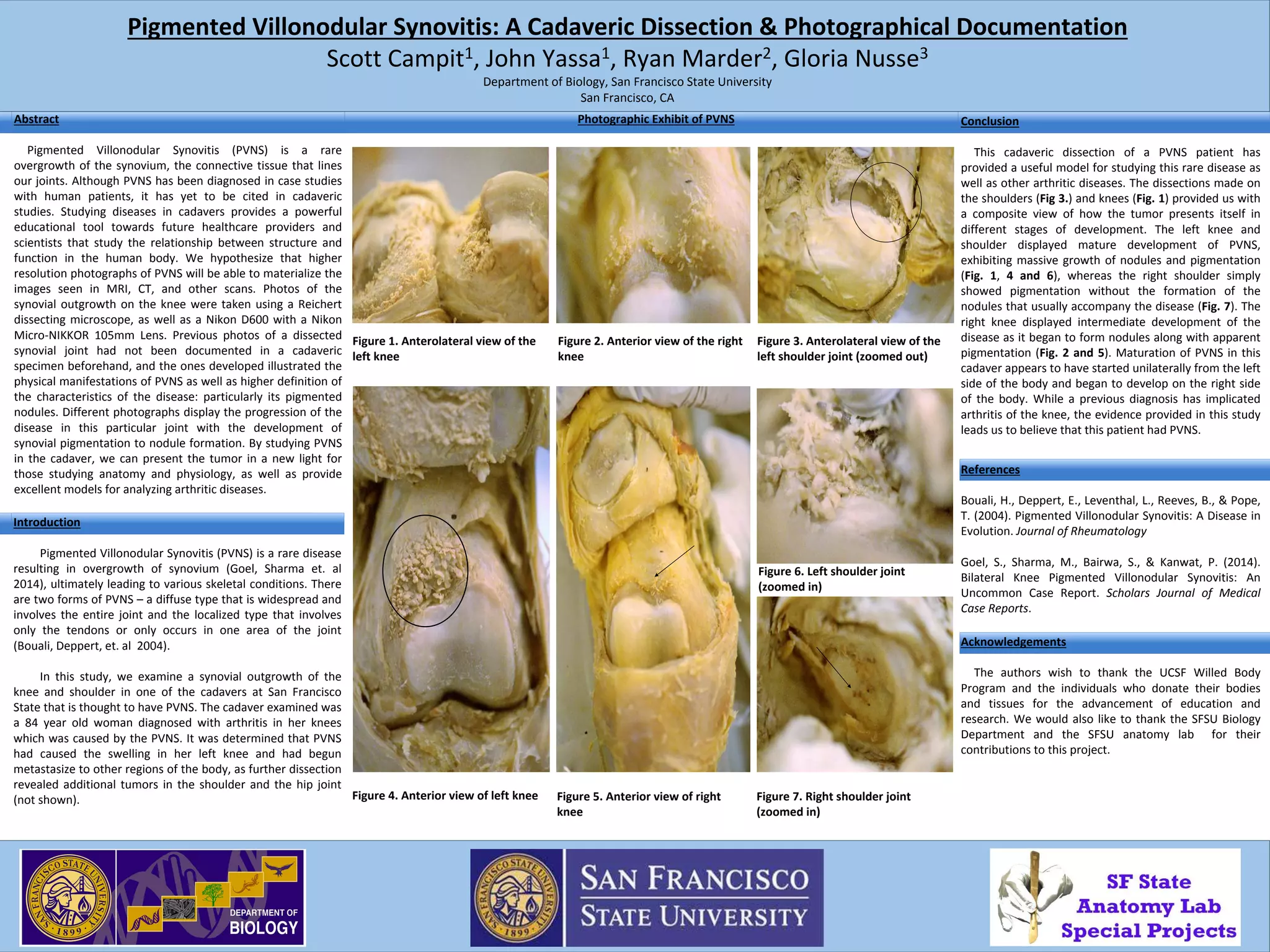This document summarizes a study of Pigmented Villonodular Synovitis (PVNS) found in a cadaver. PVNS is a rare overgrowth of the synovium that lines joints. The researchers dissected the knees and shoulders of a cadaver that had been previously diagnosed with arthritis. They found evidence of PVNS, including pigmented nodules. Photos were taken to document the progression of PVNS from early pigmentation to mature nodule formation. Studying PVNS in cadavers provides useful models for understanding arthritic diseases.
